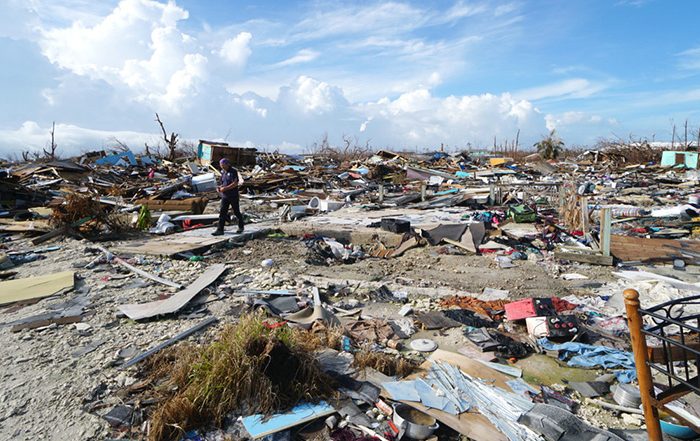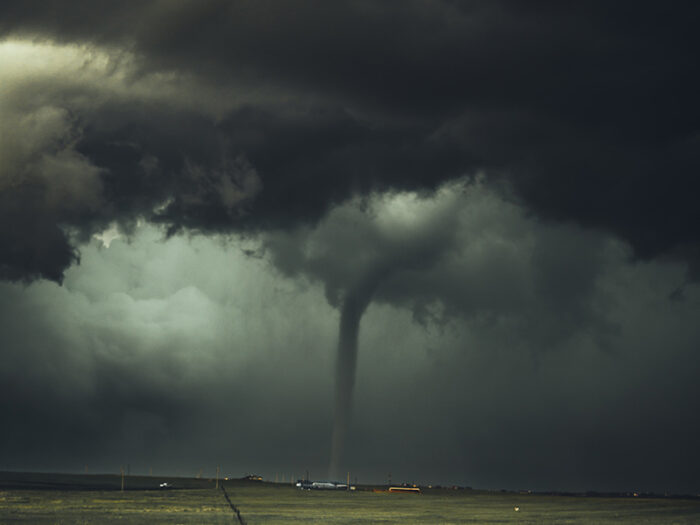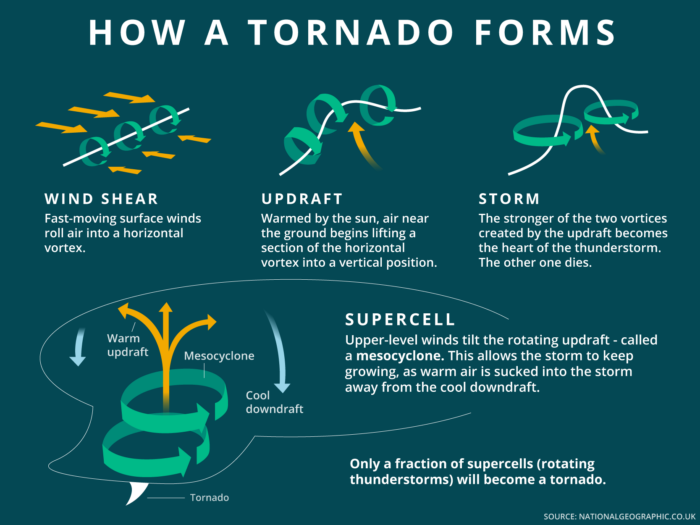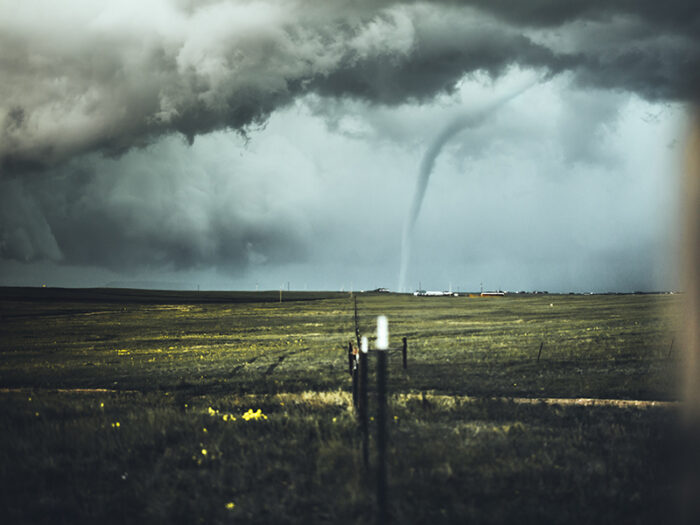
Disasters explained: hurricanes, cyclones, typhoons
Find out everything you need to know about hurricanes, cyclones and typhoons.
Tornadoes or twisters are extremely violent storms. When they form, they can wipe out whole neighbourhoods, destroying homes and even killing people.
But what are they exactly and how do they form? Read more to find out everything you need to know about them.
Although we rarely need to respond to such a disaster, ShelterBox provides emergency shelter following different types of disasters.


A tornado or twister is a narrow, violently rotating column of air. It is usually attached to the base of a thunderstorm, extending to the ground.
But it’s often hard to see it, because wind is invisible. Oftentimes it forms a condensation funnel that has gathered dust and debris. Tornadoes are amongst nature’s most violent storms, with winds sometimes reaching 300 mph.
But what causes these violent storms to form?
Supercells cause the most violent twisters. These are large thunderstorms that have winds in rotation. In fact, about one in five or six supercells forms a tornado.

Twisters form when warm, humid air meets with cold and dry air. But let’s have a look at it in more detail.
The denser cold air pushes over the warm air, usually producing thunderstorms. In turn, the warm air rises through the colder air, causing an updraft.
As a result, the updraft will begin to rotate if winds vary sharply in speed or direction.
The rotating updraft is called a mesocycle. As it draws in more warm air from the moving thunderstorm, its rotation speed increases. Cool air fed by the jet stream, a strong band of wind in the atmosphere, provides even more energy.
Water droplets from the mesocyclone’s moist air form a funnel cloud. The funnel continues to grow and eventually it descends from the cloud. When it touches the ground, it becomes a tornado. Usually, tornadoes are on the ground for no more than 15 minutes.
Source: National Geographic
Tornadoes form from two types of thunderstorms – supercells and non-supercells. Those that spawn off supercell thunderstorms are the most common but also the most dangerous.
Types of non-supercell tornadoes include quasi-linear collective systems (QLCS), landspouts and waterspouts.
1 in 5 tornadoes are associated with the quasi-linear convective systems (QLCS). These often form during the late night and early morning hours. But these tend to be weaker than those that form from supercell thunderstorms.
A landspout is a tornado with a narrow, rope-like condensation funnel. It forms while the thunderstorm cloud is still growing and there is no rotating updraft.
Waterspouts are like landspouts, but they form over water.
Source: NOAA
Scientists know how they form, but it’s very difficult to predict where they will wreak havoc.
Meteorologists at the U.S. National Weather Service use Doppler radar, satellites, weather balloons, and computer modelling to watch the skies for severe storms and tornadic activity.
The National Weather Service issues a tornado watch when weather conditions develop that are favourable for these violent storms.
Authorities issue tornado warnings when someone has spotted a tornado or weather radar indicates it. People in the warning area should seek appropriate shelter immediately.


Tornadoes can form anywhere in the world.
Yet, the United States is a major hotspot, experiencing about 1,000 twisters each year.
Tornado Alley is a region that includes the area in the eastern state of South Dakota, Nebraska, Kansas, Oklahoma, northern Texas, and eastern Colorado.
It sees the most powerful and destructive of these storms. In the United States, they kill about 70 people and injure more than 1,500 each year.